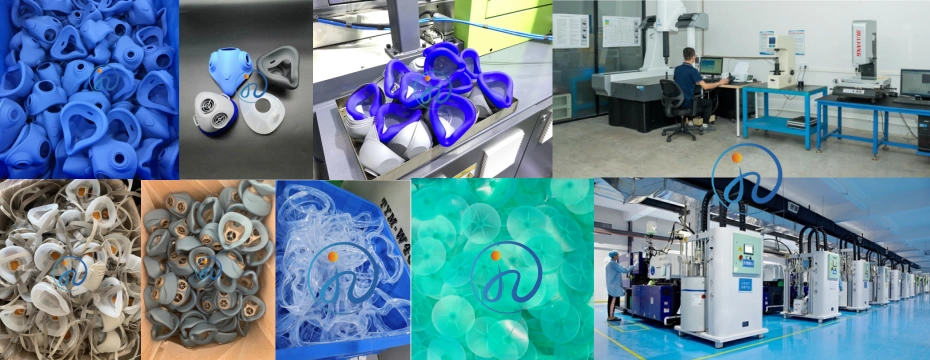A liquid silicone half-mask respirator is a type of personal protective equipment (PPE) designed to provide respiratory protection in hazardous environments. This respirator is made from liquid silicone rubber (LSR), a flexible and durable material that offers comfort, an effective seal, and resistance to chemicals and extreme temperatures. The application of liquid silicone half-mask respirators extends across various industries, including healthcare, manufacturing, chemical processing, and firefighting. This document explores the applications, benefits, and technological advancements associated with these respirators.
Composition and Design
Liquid silicone half-mask respirators consist of several key components:
- Silicone Facepiece: Made from soft liquid silicone rubber that conforms to facial contours, ensuring a secure and comfortable fit.
- Filtration System: Includes replaceable or built-in filters that remove particulates, gases, and vapors.
- Exhalation and Inhalation Valves: Facilitates proper airflow, reducing resistance and ensuring ease of breathing.
- Adjustable Straps: Provide a customized fit for different face sizes and shapes.

Applications
1. Industrial and Manufacturing Sector
- Chemical Processing: Workers handling hazardous chemicals benefit from the chemical resistance of liquid silicone, which prevents permeation and ensures long-term safety.
- Metalworking and Welding: Protects against fumes, fine metal particulates, and gases such as ozone and nitrogen oxides.
- Automotive and Aerospace: Used by workers exposed to paint vapors, adhesives, and solvents during manufacturing and assembly processes.
2. Healthcare and Medical Use
- Hospital Environments: Protects medical personnel from airborne pathogens, especially in high-risk areas such as emergency rooms and intensive care units.
- Pharmaceutical Manufacturing: Ensures workers are safeguarded against exposure to fine powders and volatile substances.
- Pandemic and Epidemic Response: Provides frontline workers with high-quality respiratory protection during outbreaks of infectious diseases.
3. Firefighting and Emergency Response
- Smoke and Toxic Fumes Protection: Used by firefighters to reduce inhalation of toxic combustion byproducts.
- Disaster Relief Operations: Emergency responders rely on these respirators when exposed to hazardous environments, such as collapsed buildings and chemical spills.
4. Construction and Mining
- Dust and Particulate Filtration: Protects workers from silica dust, asbestos, and other airborne contaminants.
- Underground Mining: Ensures safety against toxic gases like methane and carbon monoxide.
5. Laboratory and Research Applications
- Chemical and Biological Research: Protects scientists from exposure to hazardous biological agents and toxic chemicals.
- Cleanroom Environments: Prevents contamination in controlled settings where airborne particles must be minimized.
Benefits of Liquid Silicone Half-Mask Respirators
1. Enhanced Comfort and Fit
- The flexibility of liquid silicone ensures a snug, leak-proof seal, reducing pressure points and discomfort.
- Hypoallergenic properties make it suitable for individuals with sensitive skin.
2. Superior Durability and Resistance
- Resistant to extreme temperatures, making it suitable for high-heat environments.
- Does not degrade when exposed to oils, solvents, and harsh chemicals.
3. High Filtration Efficiency
- Compatible with various filter types, including N95, P100, and chemical-specific cartridges.
- Effective against particulates, gases, and biological contaminants.
4. Cost-effectiveness and Reusability
- A long lifespan reduces the need for frequent replacements compared to disposable masks.
- Easy to clean and disinfect, promoting long-term usability.
5. Environmental and Sustainability Advantages
- Reduces waste generated from single-use respirators.
- Made from non-toxic materials, making disposal safer and eco-friendly.
Conclusion
The liquid silicone half-mask respirator is an essential tool for workers across various industries. Its superior comfort, durability, and filtration efficiency make it a preferred choice for long-term respiratory protection. With ongoing advancements in technology and materials, these respirators continue to evolve, offering enhanced safety and performance in diverse applications.